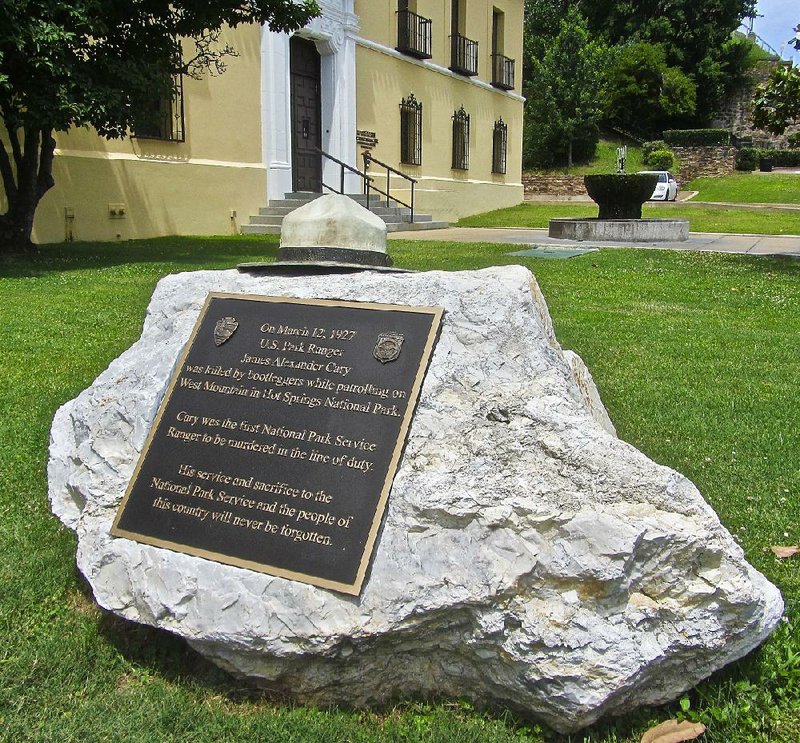HOT SPRINGS -- The bootlegging business boomed in 1927, thanks in large part to the 18th Amendment's ban on making, selling, transporting or importing "intoxicating liquors" anywhere in the United States.
Arkansas was no exception to the thriving illegal trade in whiskey and other alcoholic beverages. That rampant lawbreaking led to a history-making homicide whose victim is now honored by a monument at the south end of Bathhouse Row in Hot Springs National Park.
The memorial was dedicated last year to James A. Cary, the first National Park Service ranger anywhere to be killed in the line of duty since the federal agency's founding in 1916. Just nine other park-service rangers have been murdered since then.
There's nothing ostentatious about the Cary monument. It consists of a bronze plaque and a replica of a park ranger campaign hat mounted on a 3 1/2-foot-high boulder. The plaque's inscription is relatively brief:
"On March 12, 1927, James Alexander Cary was killed by bootleggers while patrolling on West Mountain in Hot Springs National Park. Cary was the first National Park Service ranger to be murdered in the line of duty. His service and sacrifice to the National Park Service and the people of this country will never be forgotten."
During the 2016 dedication, a park service curator told a reporter that the 31-year-old Cary would regularly search West Mountain for illicit stills and alcohol. It is believed that he was keeping an eye on crates of liquor he had earlier found and was shot while trying to arrest the bootleggers.
When it was noticed that Cary had not taken down the flag for the evening at headquarters, officers were sent to look for the absent ranger. Cary's body was found the next morning. Six men were tried for his death, but no convictions were obtained.
"Ranger Cary, like many rangers today, served our nation in many capacities, first in the U.S. Navy during World War I and later in law enforcement in the National Park Service," Hot Springs National Park Supt. Josie Fernandez told the dedication audience. "We are pleased and honored that some of his descendants have come from as far away as California for this commemoration."
The Cary memorial adds another element to Bathhouse Row, whose buildings along Central Avenue had fallen into disrepair in the resort town's decades of decline after World War II. The eight structures have been renovated since the 1980s, and most now offer allures for visitors. These include a gift shop, a brew-pub and restaurant, an art gallery and a functioning day spa.
The best place to start is the Fordyce, in the middle of the row. It serves as the national park's visitor center, with 23 restored rooms furnished as they were in Hot Springs' heyday, when celebrities patronized the bathhouses -- and the illegal but widely tolerated gambling halls.
Opened in 1915, the three-story Fordyce offered an array of therapeutic spa treatments, along with such amenities as an exercise gymnasium, a billiard room, bowling lanes and a roof garden for sunbathing.
The opulent decor gives tourists a sense of how patrons of ample means were cosseted back then. The Fordyce and its Bathhouse Row neighbors were in their prime the year that Ranger James A. Cary lost his life.
For more information on Hot Springs National Park, visit nps.gov/hosp or call (501) 620-6715.
Weekend on 06/15/2017

